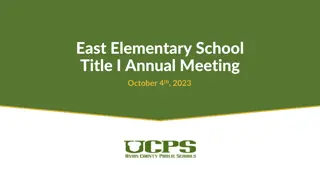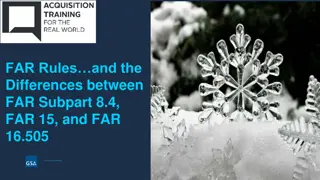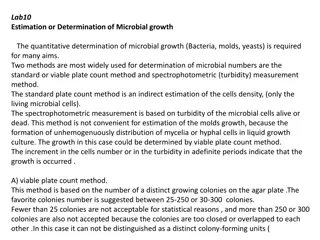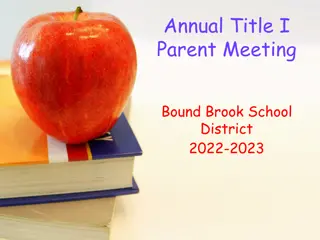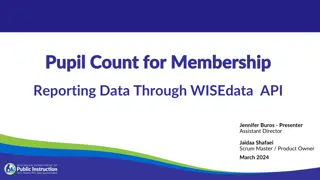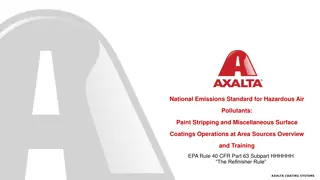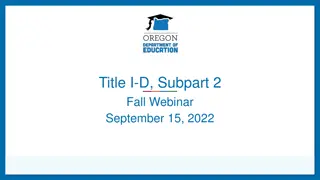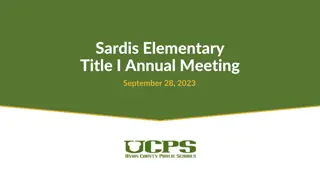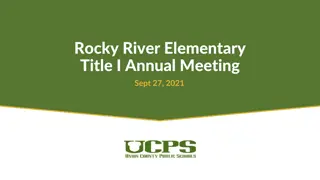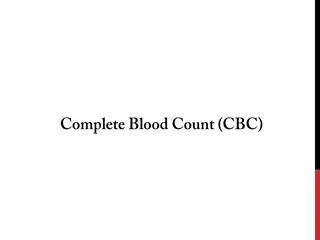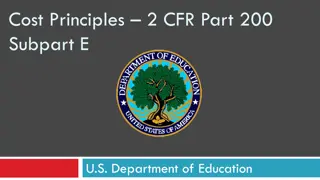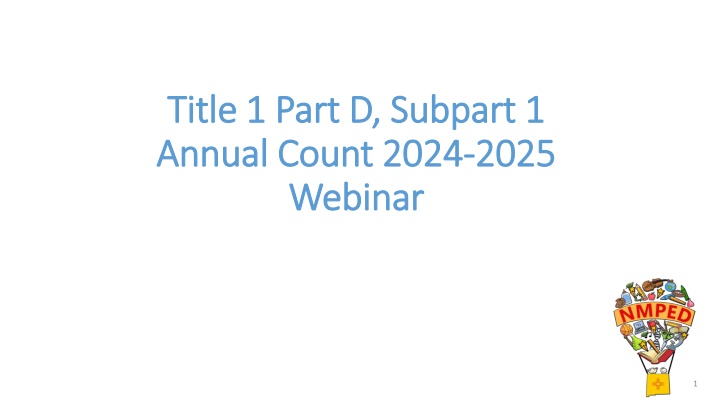
Annual Count for Neglected and Delinquent Children and Youth
Explore the purpose and process of the annual count to identify eligible children and youth who are Neglected and Delinquent. Learn how the Department of Education utilizes this data for funding allocation, and discover the key steps involved in determining eligible facilities and students.
Download Presentation

Please find below an Image/Link to download the presentation.
The content on the website is provided AS IS for your information and personal use only. It may not be sold, licensed, or shared on other websites without obtaining consent from the author. If you encounter any issues during the download, it is possible that the publisher has removed the file from their server.
You are allowed to download the files provided on this website for personal or commercial use, subject to the condition that they are used lawfully. All files are the property of their respective owners.
The content on the website is provided AS IS for your information and personal use only. It may not be sold, licensed, or shared on other websites without obtaining consent from the author.
E N D
Presentation Transcript
Title 1 Part D, Subpart 1 Title 1 Part D, Subpart 1 Annual Count 2024 Annual Count 2024- -2025 Webinar Webinar 2025 1
Objectives To provide an understanding of the purpose of the annual count. To provide information on the annual count data collection process. To provide assistance in determining eligible facilities and students. 2
Agenda Purpose Process Funding Counting Contact Information 3
Purpose of the Annual Count To accurately identify the number of eligible children and youth who are Neglected and Delinquent The Department of Education uses the data from the annual count to determine the funding that is provided to the state. To allocate funding to eligible programs and eligible children and youth with the greatest need The New Mexico Department of Education (NMPED) then awards sub grants to state agencies that serve children and youth in juvenile correctional facilities. 4
Annual Count Process 1 Determine Eligible State Agencies 2 Determine Eligible Facilities 3 Determine Eligible Students 5
Annual Count Process Determine Eligible State Agencies: State agencies that are responsible for providing free public education to children and youth who are in a Neglected or Delinquent institution, community day programs, or adult correctional facilities are eligible. New Mexico Department of Corrections, Children, Youth and Family Department (CYFD) and the Sequoyah Center under the Department of Health (DOH) have been identified as the state agencies eligible under Subpart 1. 6
Annual Count Process Determine Eligible Facilities: The facility is an institution for Neglected or Delinquent children and youth. The average length of stay in the facility is at least 30 days. The state agency (in collaboration with the department) determines which facilities are eligible. 7
Annual Count Process Determine Eligible Students: The student is 20 years of age or younger. The student is enrolled in a state-funded regular program of instruction. The student receives at least 15 hours per week of instruction if in an adult facility or at least 20 hours per week if in a juvenile facility or community day program. The facility (in collaboration with state agency and/or the department) identifies eligible students. 8
Funding The US Department of Education allocates funds to PED based upon a formula based upon a one-day annual count of youth (ages 20 or younger) who are enrolled in a regular program of instruction in eligible facilities (juvenile and adult corrections and community day programs) with an average stay of 30 days for youth who are Neglected or Delinquent. From that allocation, PED makes subgrants to eligible State agency (SA) facilities (juvenile and adult corrections and community day programs) to provide 70% supplemental academic services and 30% transitional services to eligible youth. The exception is for institution- wide projects (not allowable in adult corrections). 9
Definition The term institution for neglected or delinquent youth means a public or private residential facility, other than a foster home, that is for the care of children who: Have been committed to the institution or voluntarily placed in the institution under applicable state law due to abandonment, neglect, or death of their parents or guardians. Or have been adjudicated to be delinquent or in need of supervision. 10
Definition Regular program of instruction is defined as: Instruction that does not go beyond grade 12. Classroom instruction in basic school subjects (e.g., reading, mathematics, and career and technical education subjects). Instruction that is supported by non-federal funds. 11
Count Period The State Agency selects any one school day during the current calendar year, and all institutions must use that date for the enrollment count. Institutions adjust the count to reflect the relative length of the school year of the specific agency or institutions October December 12
Count Calculation The state agency will adjust the count to reflect the length of the school year of the agency or institution. The adjustment is made by (a) multiplying the number of students enrolled in the institution (on the day selected by the SA), by the number of days per year the regular program of instruction operates, and (b) dividing that number by a number that represents the number of school days in the academic year for the state (i.e.180). (Single Day Count) X (Length of School Year in Days) 180 Days 13
Contact Information Dr. Nicole O Shea Title 1 Part D Coordinator Student, School, and Family Support Bureau New Mexico Department of Education Email: nicole.oshea@ped.nm.gov Phone: (505) 531 7389 14

